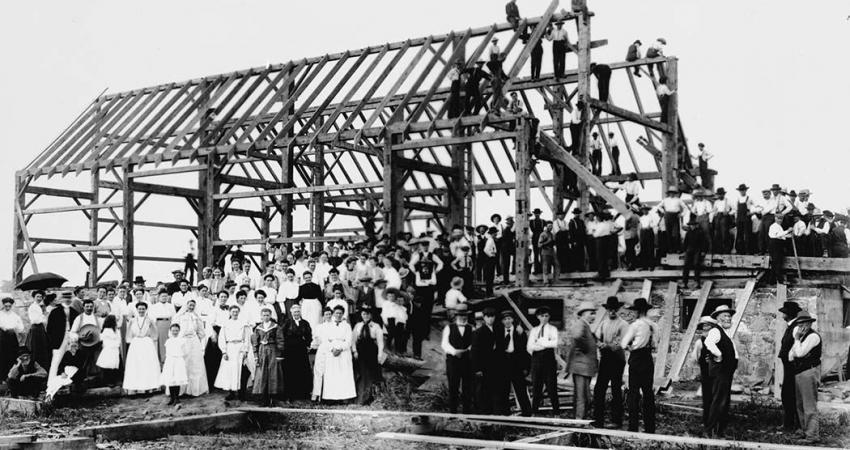Extending Consul’s Participatory Budgeting Functionality

Participatory budgeting (PB) is one of the most popular types of participatory democracy practices in the United States. It’s utilized in dozens of cities in the US and hundreds in the English-speaking world. As such, PB can serve as a foothold for participatory democracy in the US that can be expanded to include citizen-driven proposals, legislative review, consensus-building systems, and more.
The open source Consul software system produced by the city of Madrid already has features to support the implementation of PB processes within cities. Our organization, Sarapis, is currently working for the Participatory Budgeting Project to build additional features into Consul so it can be used to manage New York City’s PB process. As such, we’re familiar with the needs of PB processes and stakeholders, the capability of Consul related to fulfilling these needs, and how we can improve Consul so it can more effectively accommodate various types of PB processes.
Our goal for this project is to map out how Consul can become an “industry standard” solution for PB management throughout the world.
To achieve this, we’ve come up with a number of ideas for how to related to improving Consul and will work with our project group and outside experts to come up with more ideas. We'll then explore our group's interests and skills, and select a number of ideas for our group to further develop during this project.
Project Groups: Often groups of people, not just individuals, create and advocate for PB project proposals. We will design a collaborative online space within Consul where people can work together to collect ideas, design projects/proposals and promote them to other residents.
-
See Consul proposal management feature currently in development: https://github.com/consul/consul/issues/2688
-
vTaiwan process toolset: https://vtaiwan.tw/
Data Dashboards: People need more data to support their decision making when it comes to ideas, project and proposal creation, advocacy and voting. We will explore designs and mechanisms for sharing demographic and other data to Consul users via maps, charts, and more to see how we can help users make more and better data-informed decisions.
-
See how NYC Planning Labs Community Profiles tells the story of a geographic area: https://communityprofiles.planning.nyc.gov/
Improved Mapping: Consul's current mapping system only supports putting points/pins on a map. We'll explore how adding polygon geography functionality could benefit the system. This functionality could enable the delivery of richer data. Some examples include putting demographics and political boundaries on Consul-generate maps, enabling projects to appear on maps as polygons/areas instead of just points, and enabling users to create areas to learn more about them.
-
See how NYC Capital Planning maps contextualize facility locations with polygon layers: CapitalPlanning.nyc
-
See how NYC Planning Labs Population Fact Finder allows users to select areas to get information about them: https://popfactfinder.planning.nyc.gov/)
Ranked Choice Voting: Currently Consul supports “knapsack” and approval-based voting but doesn’t support the third most popular option: ranked choice voting. We can design an interface for ranked choice voting - where people get to select the projects they want to see done, and then rank the importance of those projects.
-
Example of a ranked choice PB interface: https://pbstanford.org/dieppe2015
Paper Ballots: Paper ballots are an important part of many PB processes. We need to be able to generate ballots from approved projects, print them, distribute them, collect and count them.
-
See gallery of PB ballots: (coming soon)
Project Profiles: PB participants often want to know more about what happens with the projects that they vote on over time. We can help design a better way for projects to be presented over time, with a particular focus on projects that have been approved through PB.
-
See MyPB Project Tracking App: mypb.community
Implementing Projects Transparently: Once people start thinking about and research PB projects, they often want to learn more about their government: what are the other projects being funded, what agencies are producing them, etc. We can explore how to share information about city operations more broadly and how PB projects can fit within those systems and frameworks.
-
See the MyGov App for an example of how city agencies can be documented: app.mygov.nyc
PB Configuration Wizard: As the features in Consul’s PB module are more generalize, more options for the administrator emerge, and thus more decisions need to be made. We can design a process and content for administrators to walk them through the options.
-
See reference apps for good configuration wizards (coming soon)
Voting Machine Interface: Some PB processes rely on people going to a location to vote. While paper is a popular format for these votes, paperless computer interfaces are also a popular choice. We can design how Consul could support (or integrate with) computerized voting machines for PB elections.
-
See pbstanford.org’s voting machine feature. (coming soon)
Compare Consul and Decidem: Barcelona’s Decidem e-participation app offers many of the same features as Consul, but it has implemented them in a different way. Currently there is no impartial comparison between the two apps. We could produce a report comparing these two systems.
-
See decidem website: https://decidim.org/
-
See consul website: consulproject.org
Establish a news and knowledge base for the group’s research: We’ll be doing a lot of research and sharing lots of information during our work. Let’s establish a system that can retain this information and turn it into a knowledge base that can grow during and after our project is over. This system could answer: what are the entities (people, places, organizations, tools, etc) and facets (techniques, terms, concepts) that we should be aware of, tracking, connecting together to develop a better understanding of the participatory budgeting and e-participation movements.
-
Current news and knowledge mode: municipalist.org
e-Participation Method Cards: Method cards and “playbooks” are an increasingly popular way to format information to support people exploring new ways of doing things. We can use examples from the IFRC and 18F (US version of a Government Digital Service) to create a series of method cards for people interested in advocating for and implementing PB and other participatory democratic practices within their own city.
-
See 18F’s method cards: https://methods.18f.gov/
What other ideas do you have? Let us know



 Medialab-Matadero Madrid
Medialab-Matadero Madrid
